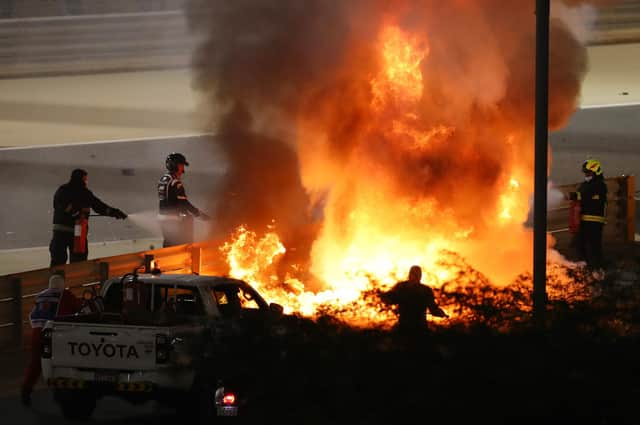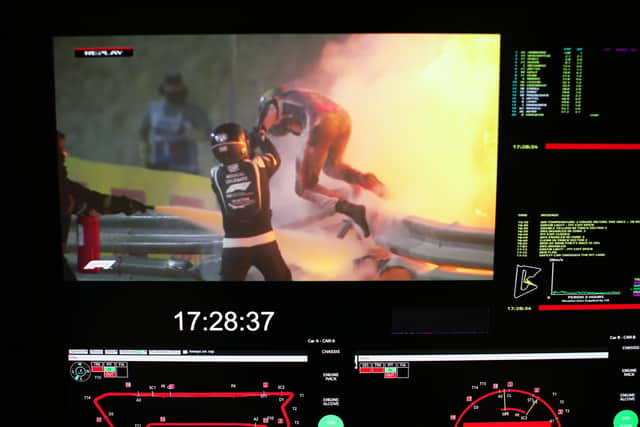Romain Grosjean says halo device saved his life in Bahrain crash


Grosjean’s Haas team said treatment on the Frenchman’s burned hands sustained in the harrowing accident is “going well”.
The statement said it is anticipated that the 34–year-old will be discharged on Tuesday.
Advertisement
Hide AdAdvertisement
Hide Ad“Romain Grosjean is continuing his convalescence at the Bahrain Defence Force (BDF) hospital having remained there overnight following Sunday’s incident at the Bahrain GP,” the Haas statement said.
“Treatment on the burns Grosjean sustained on the back of both his hands is going well. Grosjean was visited by Gunther Steiner, team principal of Haas F1 Team, on Monday, and it is anticipated he will be discharged from the care of the hospital on Tuesday 1st December.”
Speaking from his hospital bed on just hours after surviving the most dramatic accident of recent Formula One memory in Sunday’s Bahrain Grand Prix, Grosjean credited the sport’s controversial halo device with saving his life.
The French driver’s car split in two and burst into flames after he pierced through a steel barrier at 137mph following a collision with AlphaTauri’s Daniil Kvyat.
Grosjean scrambled to get out of his burning wreckage for almost half a minute before leaping to safety.


The force of the impact registered at 53G, but Grosjean escaped with just minor burns to his hands. He was airlifted to the BDF Military Hospital, 10 miles north of the Bahrain International Circuit.
The halo device – a three-pronged titanium protection system which sits above the driver’s head and was introduced in 2018 – played a prominent role in the Frenchman’s remarkable survival.
Grosjean had been sceptical about the introduction of the halo, but on Sunday night, with both his hands in bandages and tubes monitoring his vital statistics, he said: “I wasn’t for the halo some years ago but I think it’s the greatest thing that we brought to Formula One and without it I wouldn’t be able to speak to you today.”
Advertisement
Hide AdAdvertisement
Hide AdF1’s governing body, the FIA, will launch an investigation into the accident, with question marks over how Grosjean’s car penetrated a steel barrier, broke in two, and why it caught alight.
FIA race director Michael Masi warned that the findings of the investigation could take several months.
A message from the Editor:
Thank you for reading this article. We're more reliant on your support than ever as the shift in consumer habits brought about by coronavirus impacts our advertisers.
If you haven't already, please consider supporting our trusted, fact-checked journalism by taking out a digital subscription.
Comments
Want to join the conversation? Please or to comment on this article.